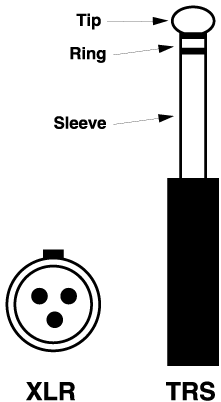
The Problem
A recording studio can have miles of cable running from here to there and back again. When making cable runs of any length it's important to be able to reject any noise that may jump on the line from a number of sources. Radio Frequency (RF), noise from dimmers or fluorescent lighting, CB radio transmissions, AM/FM radio transmissions and more can end up hitchhiking along with your signal. Think about it, when you lay out a length of cable you are essentially making an antenna. When you lay out thousands of yards of antennas it can be a nightmare.
The Solution
The best way to remedy this is to used balanced connections throughout your studio. The difference between balanced and unbalanced cable is an extra conductor in the wire. An unbalanced connection runs two conductors, a hot (+) and a ground. A balanced connection runs three conductors, a hot (+), a cold (-), and a ground. What makes the difference is not in the cable but in what happens at either end, before and after the signal travels down the cable. Any cable can be an antenna and a noise collector.

First lets look at balanced connectors. You
can see that they come in two common forms, one is an XLR or cannon plug
and the other is a TRS 1/4" connector. Don't confuse this balanced connection
with the balanced connector that's used on some consoles. On a number of
Mackie consoles for instance, they use a TRS to run an insert in and out
of the board. This is not balanced but using the three connections as in,
out and ground. One connector does the job of two and it's not balanced.
The cool thing that balanced connections do has to do with tricking the
noise on the line into phase canceling itself out of existence. (Remember
our feature on Phase?)
Here's how it happens. A balanced connection first runs through a differential
amplifier which splits the hot signal into two and flips one half 180 degrees
out of phase. This travels along the cable as plus and minus along with
the ground on three separate conductors. Along the way the usual noise
is encountered and picked up by the line. At the other end of the connection,
the minus is flipped back into phase and you end up with a plus and a ground
again as when you started. But now the noise is out of phase with itself
and cancels completely. Pretty tricky huh!
So now you can make long cable runs and not
worry about errant noise entering the picture. All pro studios are balanced
all the way from the mic panels to the patch bay and to all machines and
outboard gear. Buying balanced gear is a bit more expensive but pays off
big dividends in the sound and noise department.
Keep your eyes here next week for our multi
part series on consoles.
I'd like to hear from you. Take a moment to
write me and let me know how you feel about the content and links.